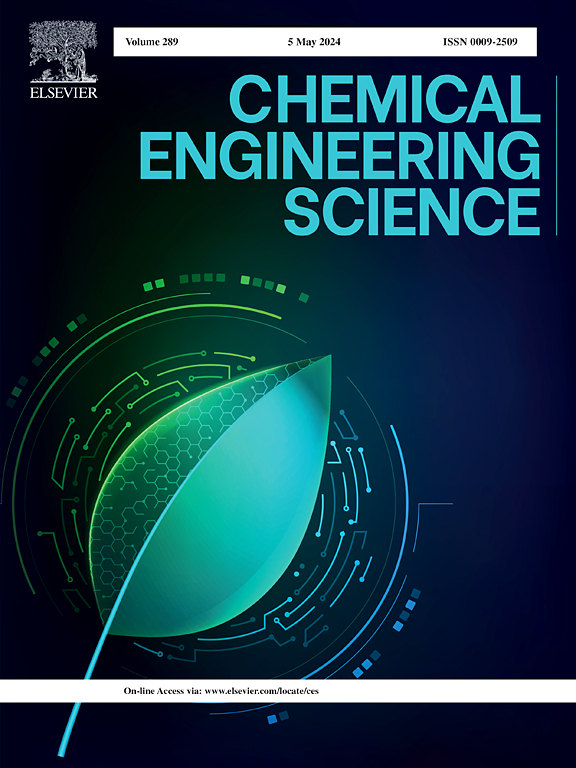Process validation of propane dehydrogenation in a CFB reactor with heat supply and catalyst regeneration: CFD simulation coupled with reaction kinetics
IF 4.1
2区 工程技术
Q2 ENGINEERING, CHEMICAL
引用次数: 0
Abstract
Although fixed-bed and moving-bed technologies for propane dehydrogenation have been commercialized in large scales, the process efficiency is still low due to the highly endothermic nature of the reaction and quick catalyst deactivation. Herein, the superiority of the circulating fluidized bed reactor in mitigating these issues is validated, in which the continuous dehydrogenation-regeneration process for propane dehydrogenation is numerically studied with integrated heat supply by using circulating catalyst particles as heat carriers and catalyst regeneration to remove deposited coke. The physical model of the riser with considering the heat supply and catalyst regeneration is developed to simplify the full-loop reactor. Additionally, the two-fluid model, incorporating a sub-grid drag model and detailed reaction kinetics, is adopted to simulate the propane dehydrogenation process in the circulating fluidized bed reactor, and key operating parameters are optimized. Results indicate the reactor with integrated heat supply and catalyst regeneration can be operated steadily under a wide range of operating conditions. Specifically, higher catalyst inventory, circulating particle temperature, and regeneration extent all positively contribute to the propylene yield, while the optimal inlet gas flow rate for maximizing propylene yield is found to range between 20 and 25 Nm3·h−1. These findings promote the understanding of the propane dehydrogenation processes in circulating fluidized bed reactors.
带热源和催化剂再生的CFB反应器丙烷脱氢工艺验证:CFD模拟与反应动力学耦合
虽然固定床和移动床丙烷脱氢技术已经大规模商业化,但由于反应的高吸热性质和催化剂的快速失活,工艺效率仍然很低。本文验证了循环流化床反应器在缓解上述问题方面的优越性,以循环催化剂颗粒为热载体,以催化剂再生去除沉积焦炭,在一体化供热条件下对丙烷连续脱氢-再生工艺进行了数值研究。为了简化全回路反应器,建立了考虑供热和催化剂再生的提升管物理模型。采用结合亚网格阻力模型和详细反应动力学的双流体模型对循环流化床丙烷脱氢过程进行了模拟,并对关键运行参数进行了优化。结果表明,该反应器具有一体化的供热和催化剂再生功能,可在较宽的工况范围内稳定运行。具体而言,较高的催化剂库存、循环颗粒温度和再生程度都对丙烯收率有积极的影响,而丙烯收率最大化的最佳入口气体流量在20 ~ 25 Nm3·h−1之间。这些发现促进了对循环流化床反应器中丙烷脱氢过程的认识。
本文章由计算机程序翻译,如有差异,请以英文原文为准。
求助全文
约1分钟内获得全文
求助全文
来源期刊

Chemical Engineering Science
工程技术-工程:化工
CiteScore
7.50
自引率
8.50%
发文量
1025
审稿时长
50 days
期刊介绍:
Chemical engineering enables the transformation of natural resources and energy into useful products for society. It draws on and applies natural sciences, mathematics and economics, and has developed fundamental engineering science that underpins the discipline.
Chemical Engineering Science (CES) has been publishing papers on the fundamentals of chemical engineering since 1951. CES is the platform where the most significant advances in the discipline have ever since been published. Chemical Engineering Science has accompanied and sustained chemical engineering through its development into the vibrant and broad scientific discipline it is today.
 求助内容:
求助内容: 应助结果提醒方式:
应助结果提醒方式:


